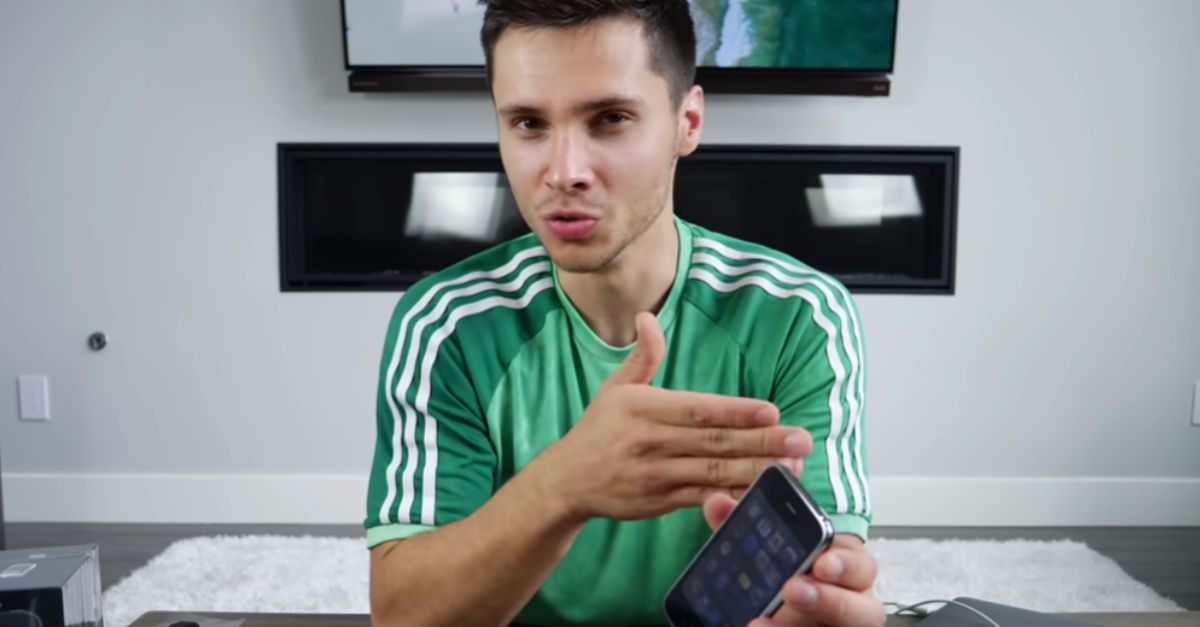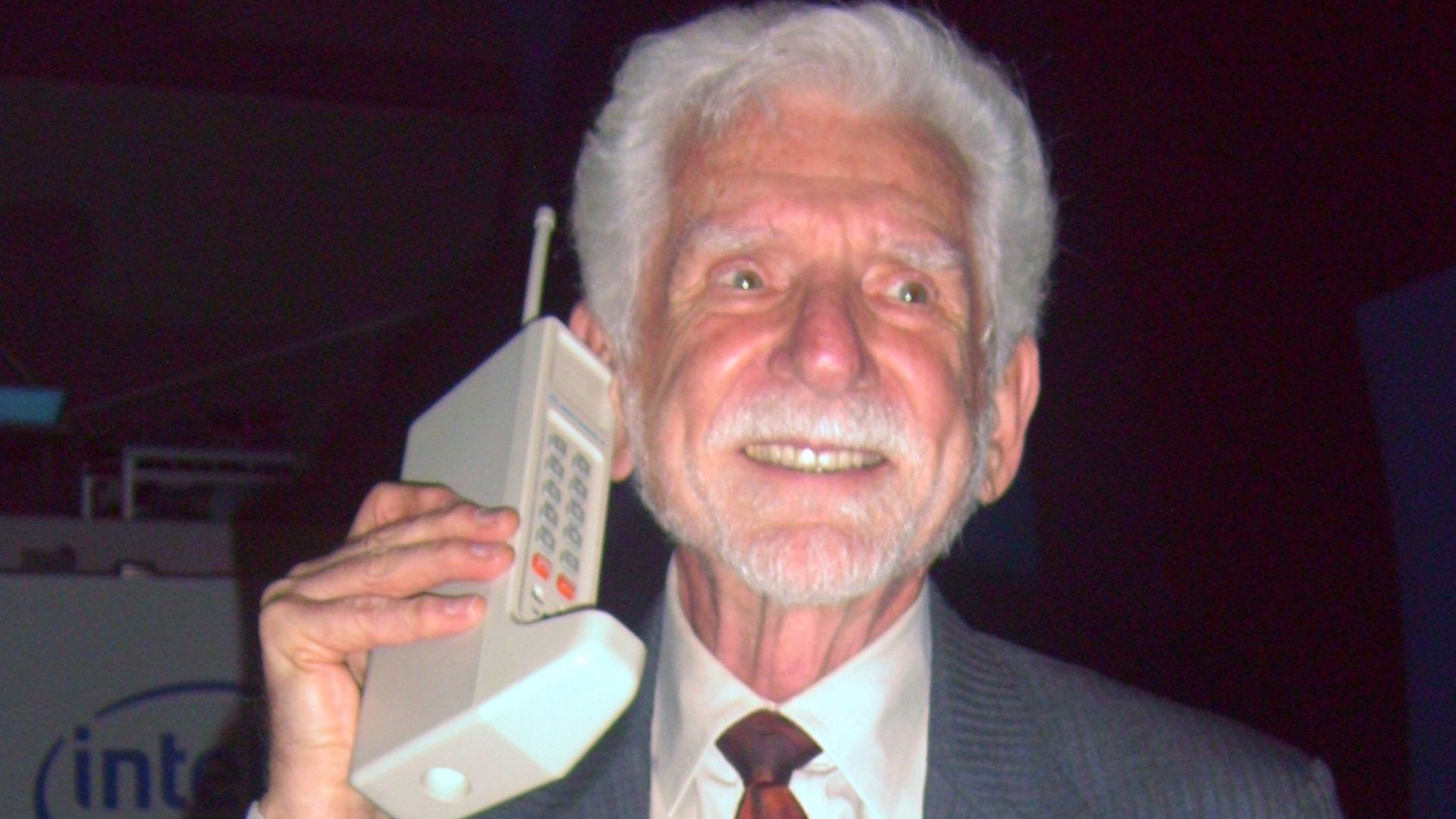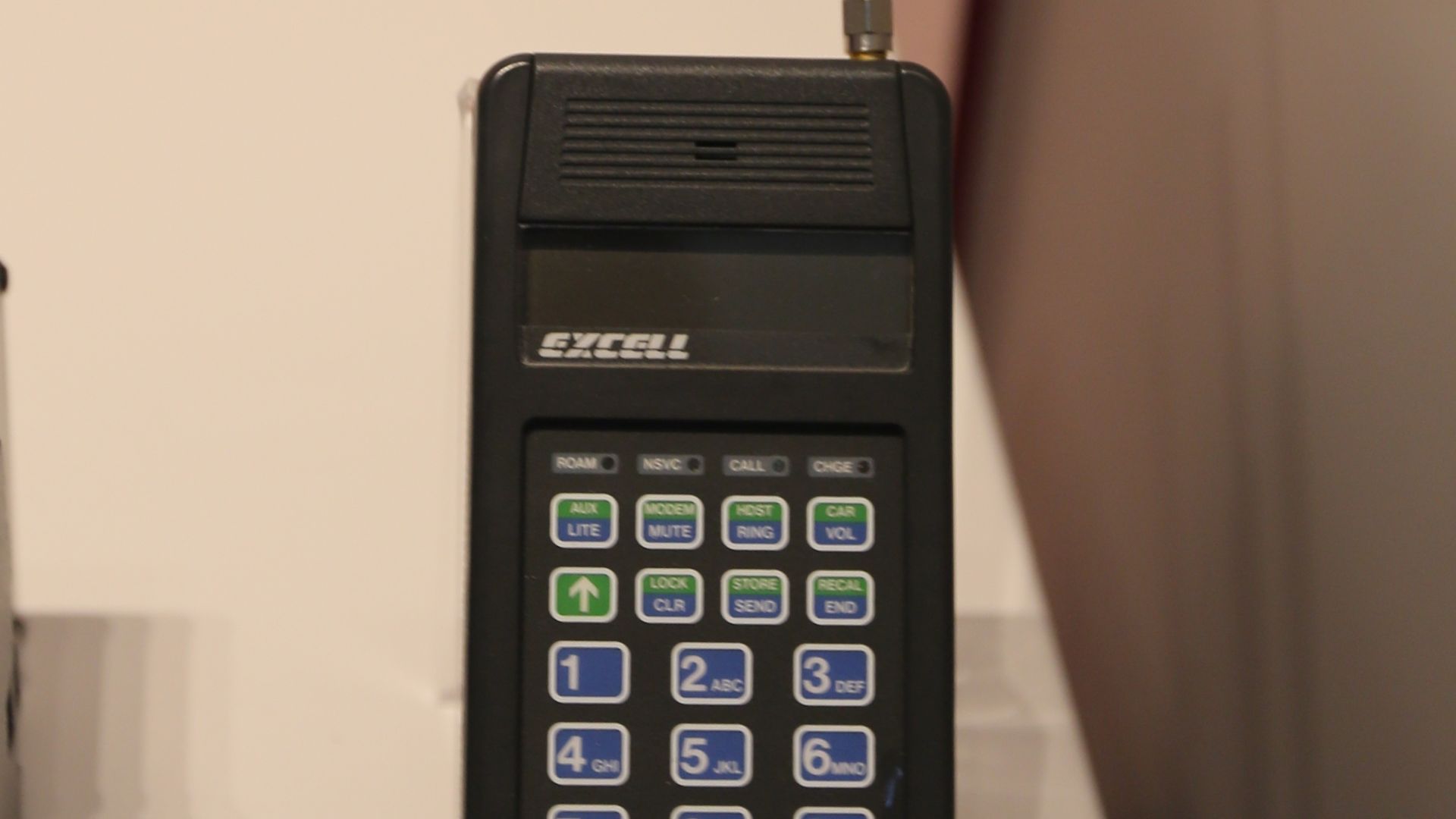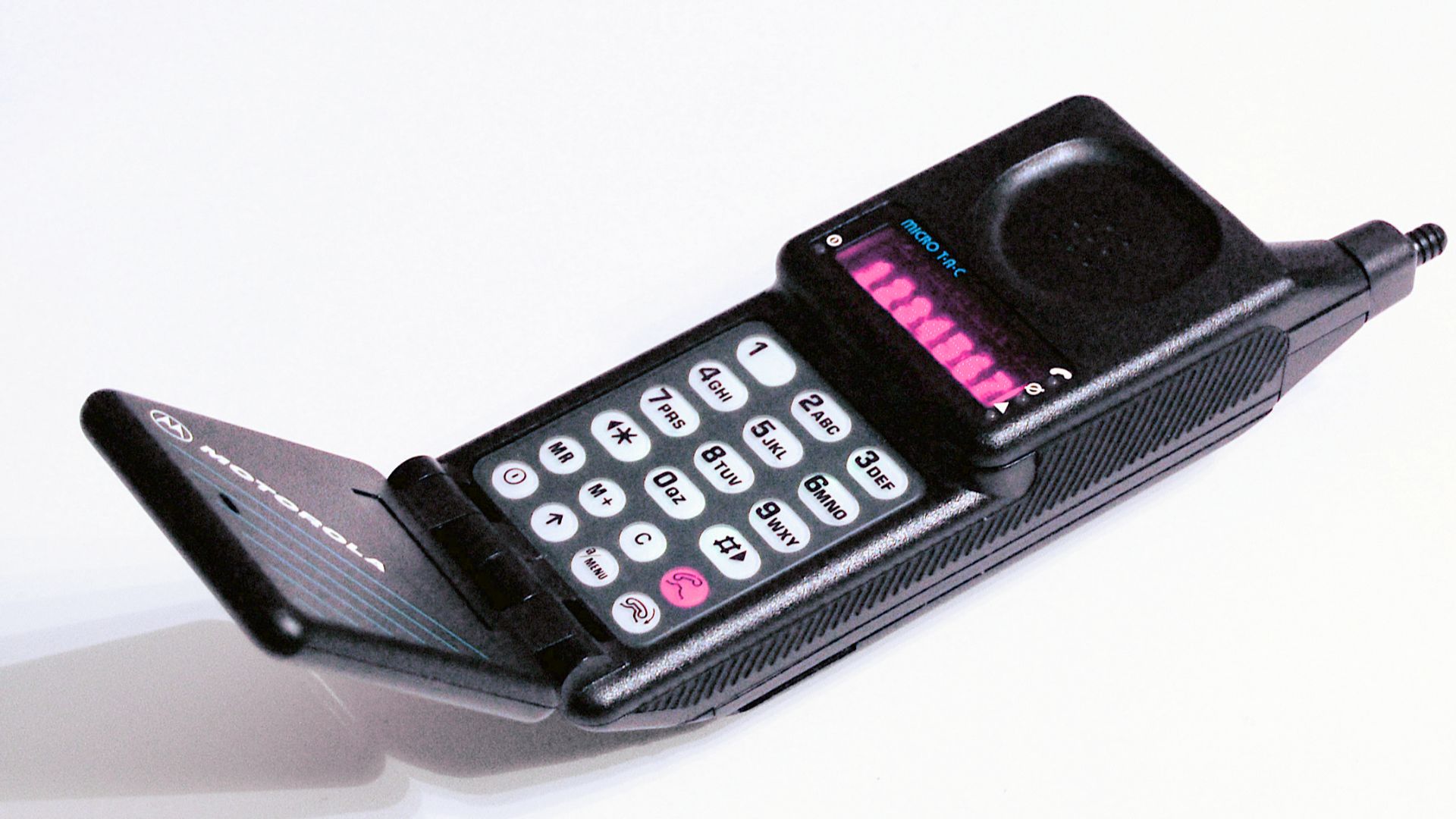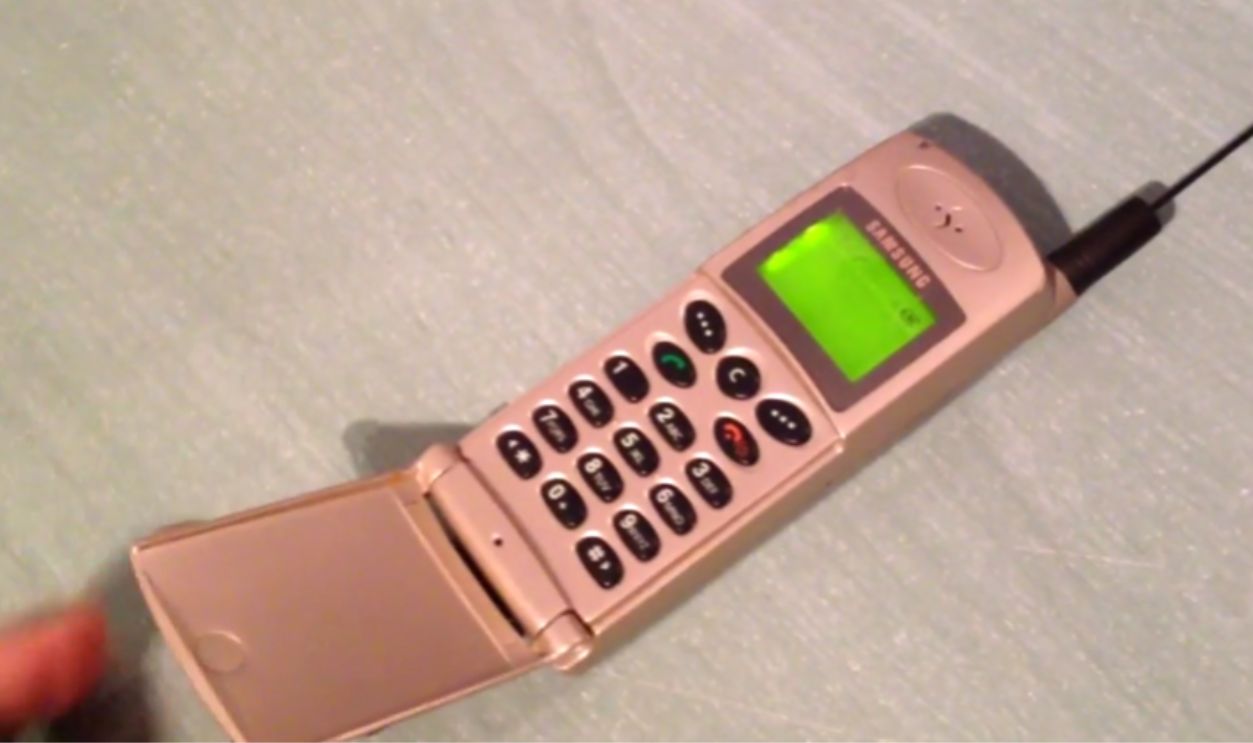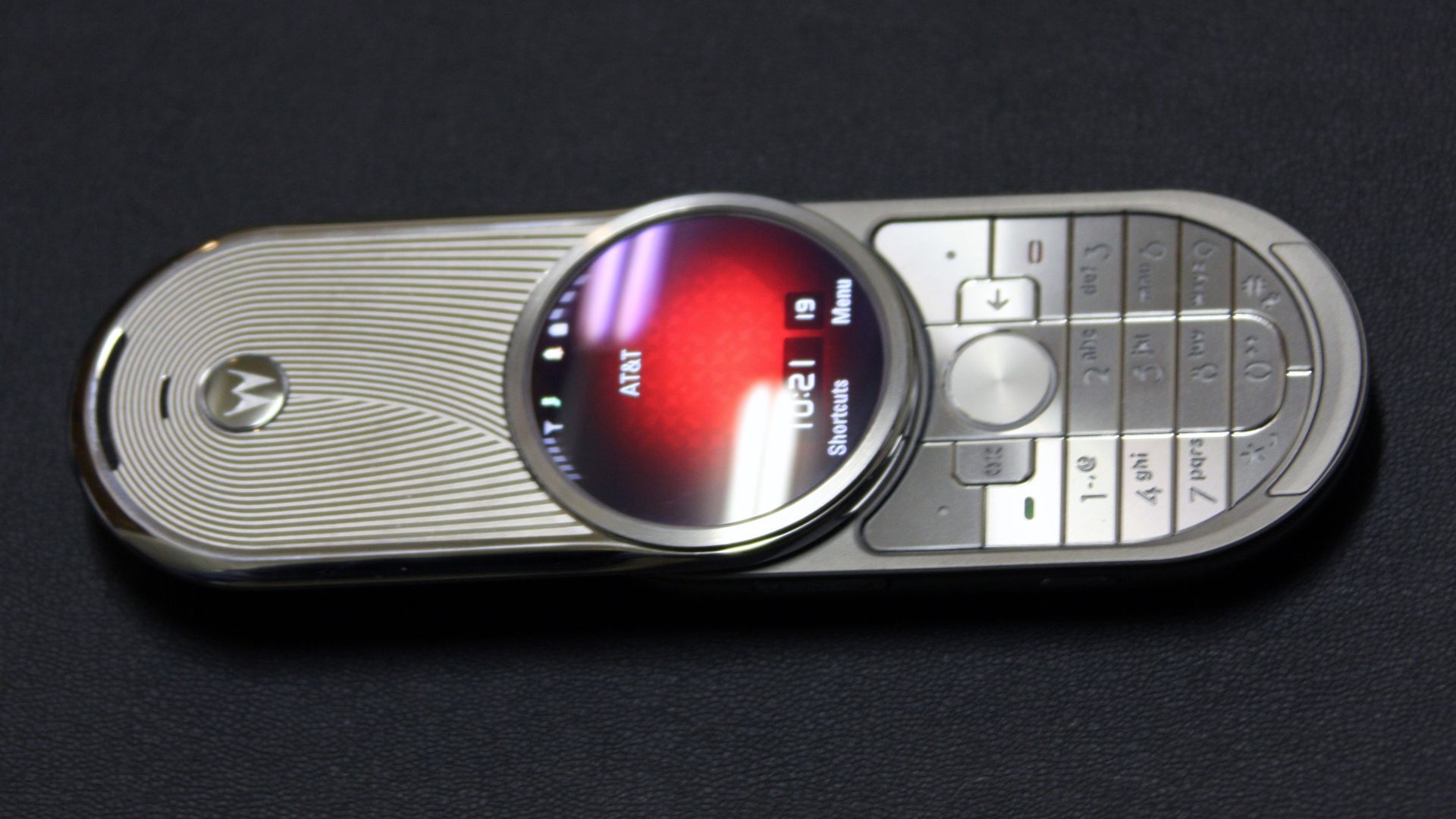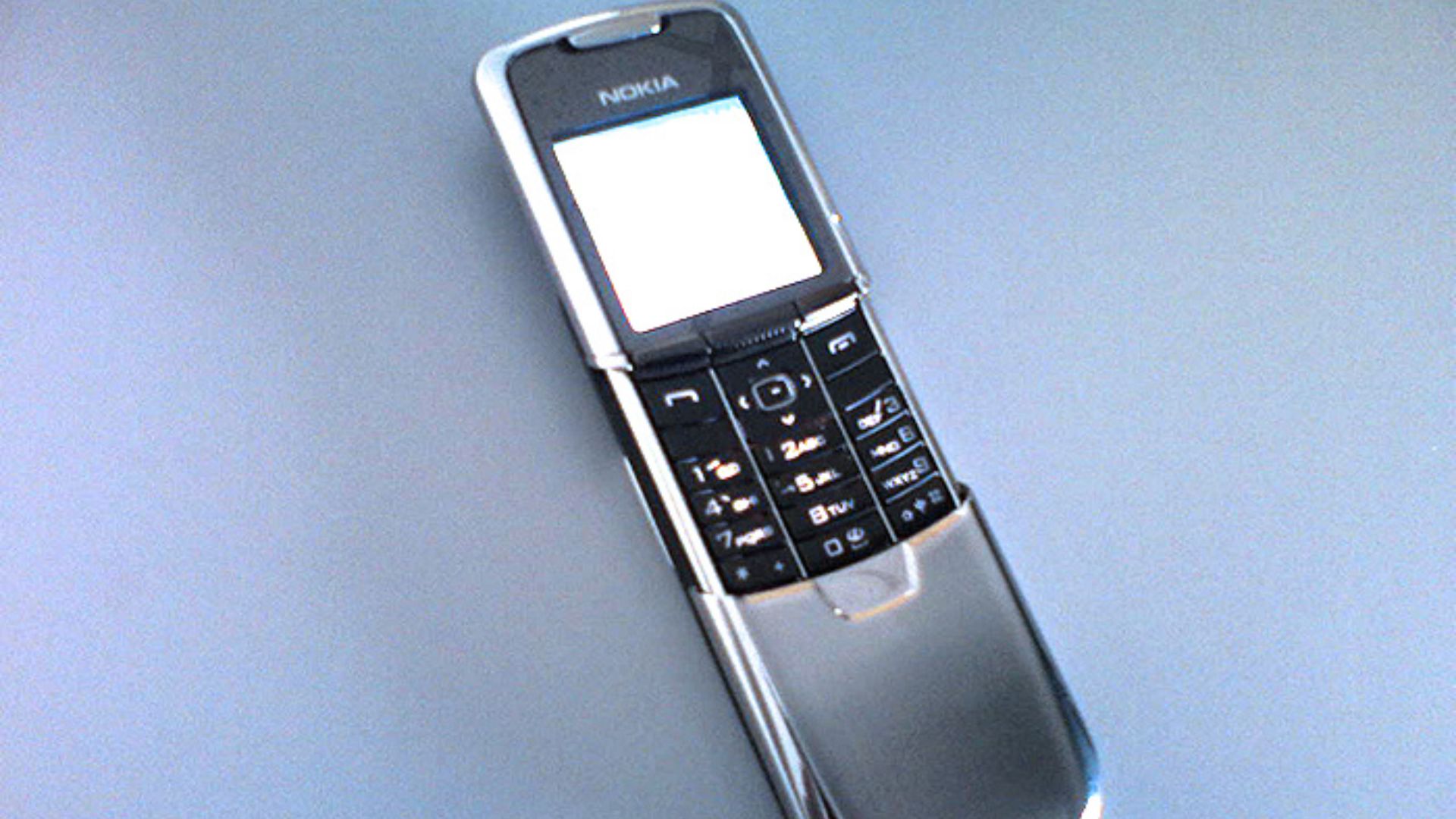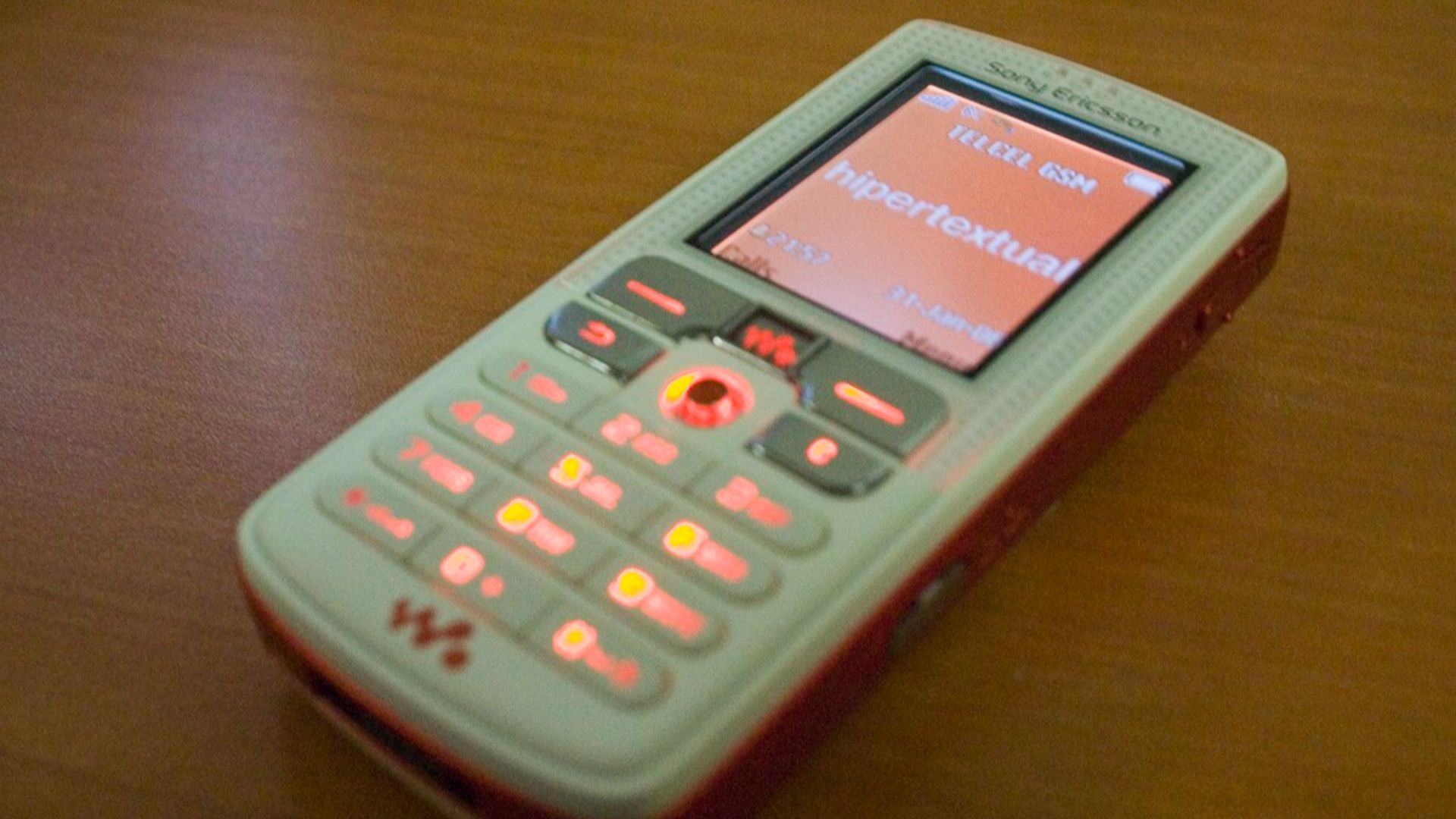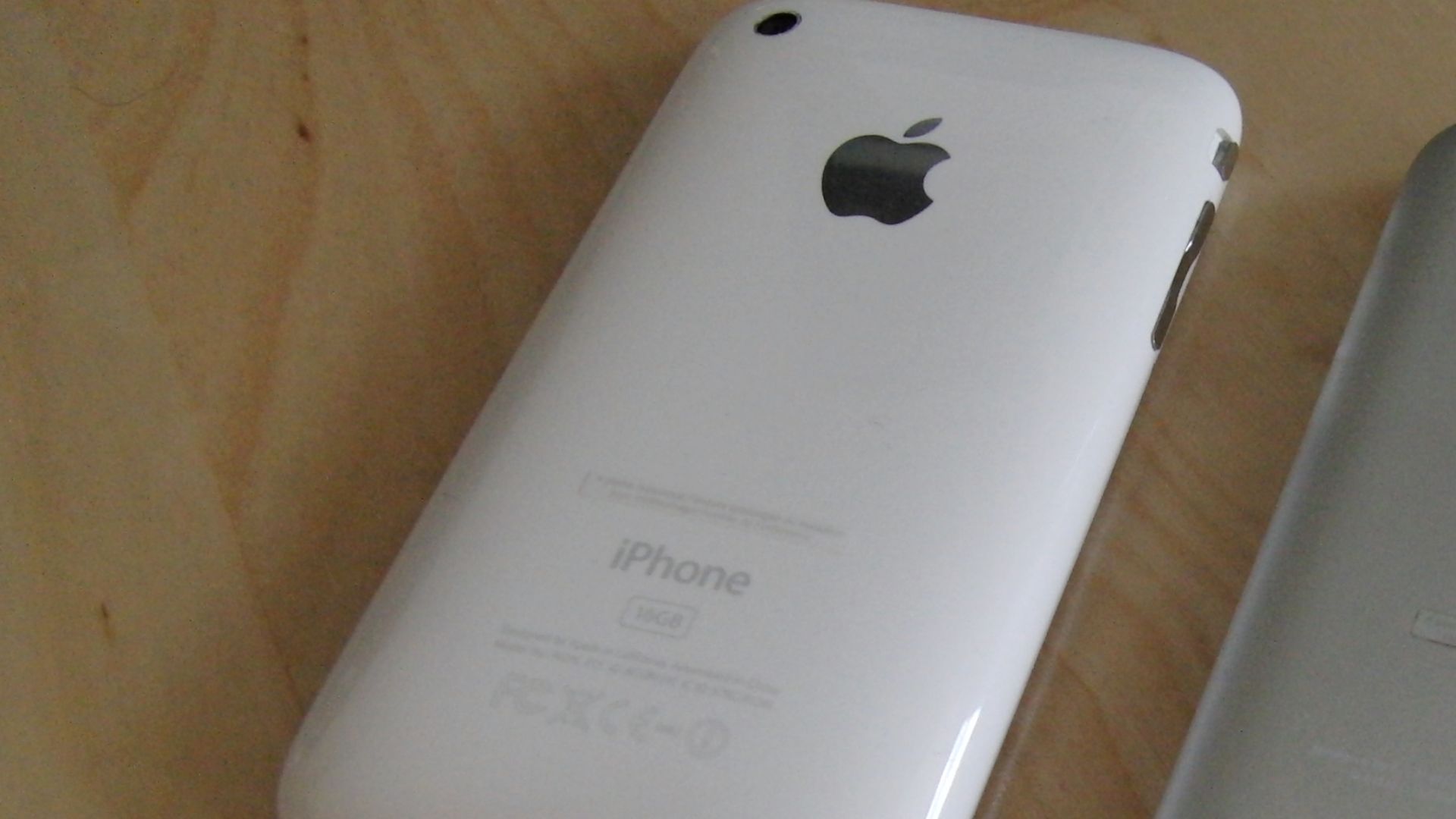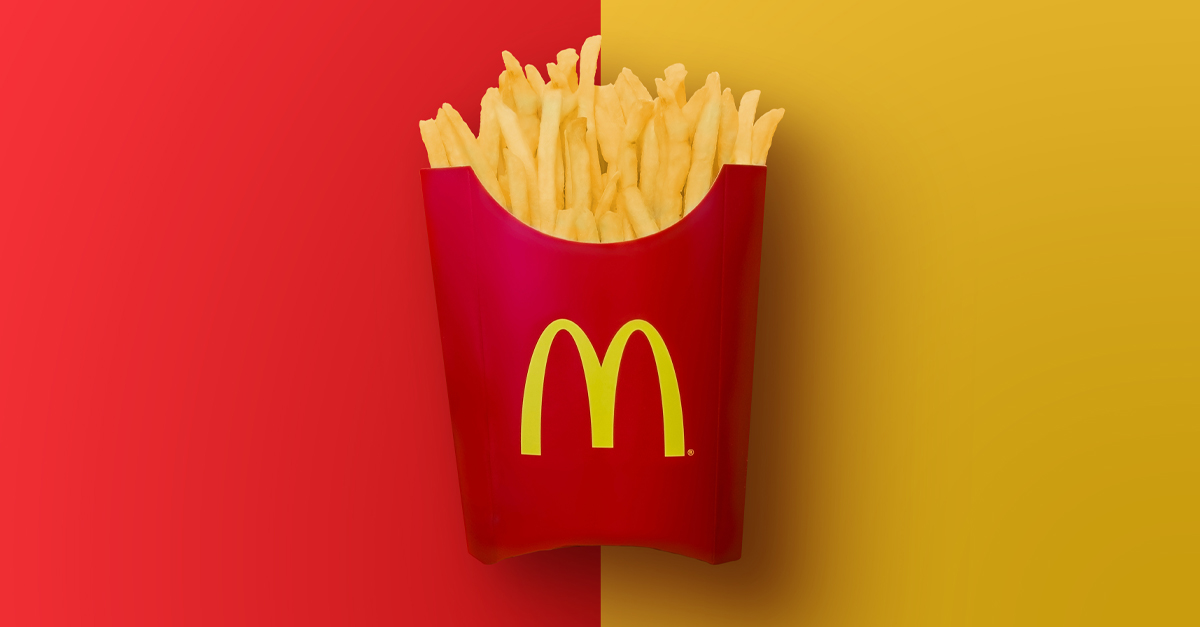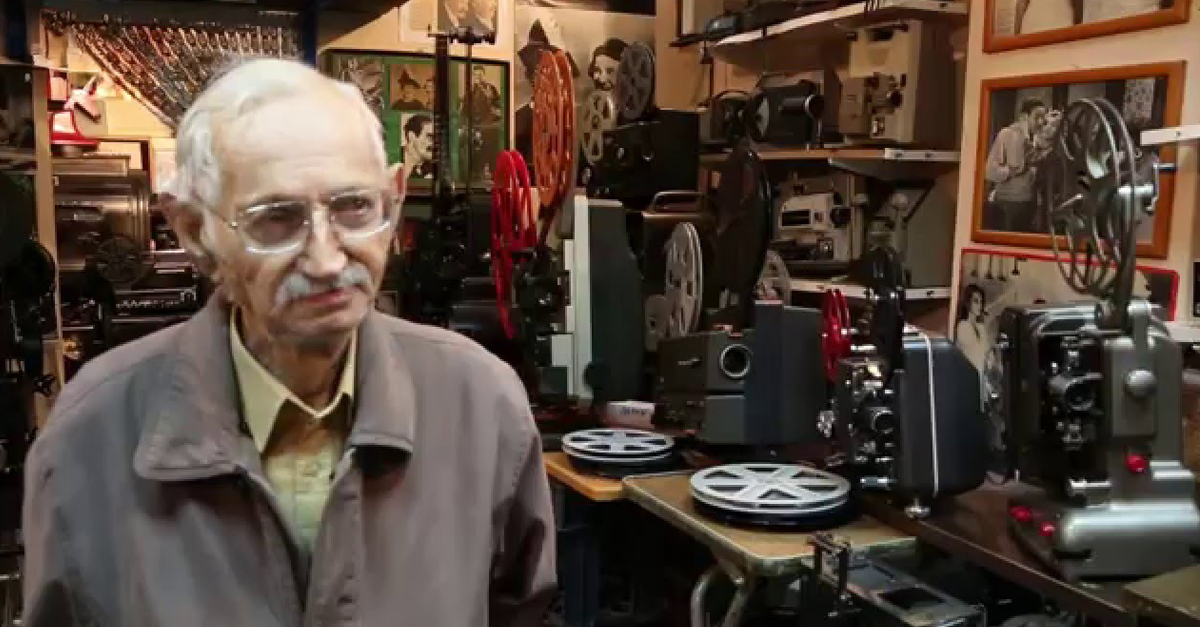The Old Gold In Classic Phones
Phones used to be bulky, brick-like devices that weighed pounds. Today, those early models have turned into valuable keepsakes that collectors and tech fans can’t stop chasing.
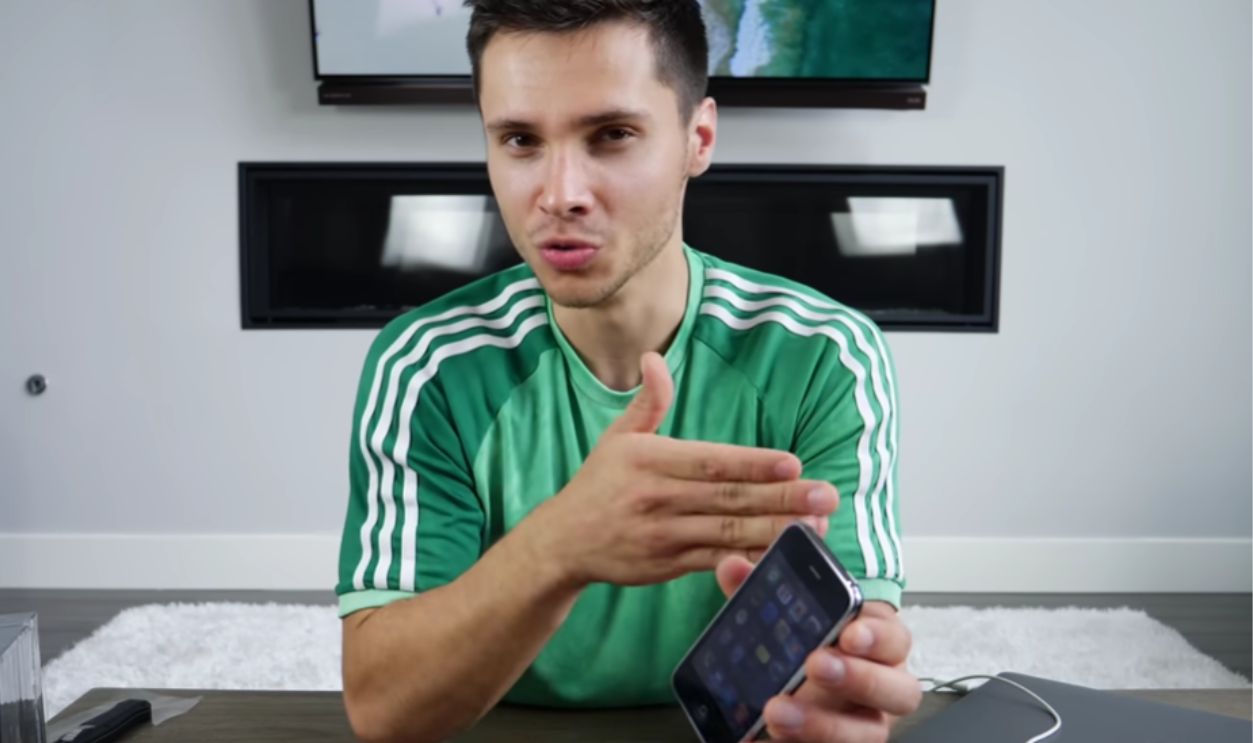
Motorola DynaTAC 8000X (1984)
Before smartphones became pocket-sized essentials, the DynaTAC captured attention with its bulky design and a staggering $3,995 price (commercially released in 1984 after its 1983 debut). Weighing around 1.75–2 pounds, it allowed just 30 minutes of talk time. Mint-condition units now sell for $5,000 to $15,000.
Mobira Senator NMT (1982)
Today, it’s rarely seen in US collections, but collectors typically find it through European auctions for approximately $500–$1,000. Released in 1982 and designed for car installation, the Mobira Senator required a vehicle-mounted unit, ran on the NMT-450 network, and predated handheld models.
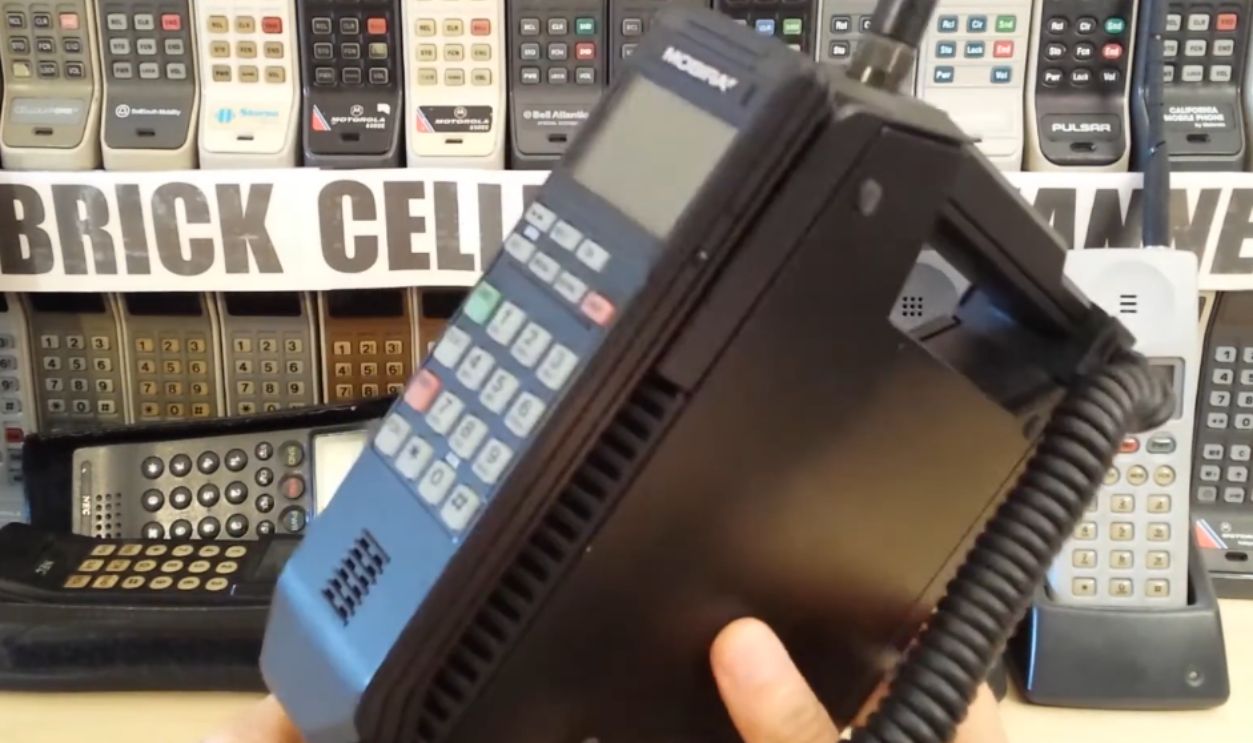 Insane Looking Nokia Mobira Talkman Transportable TPA-4 by BrickCellphones
Insane Looking Nokia Mobira Talkman Transportable TPA-4 by BrickCellphones
Technophone PC105T (1986)
Next comes the PC105T, a UK creation that proved phones could shrink. The PC105T weighed just 18.5 ounces and measured 7 × 3 × 1 inches, redefining the concept of portability. Although most were sold in Europe, a few reached US collectors. Working models still fetch around $1,000 to $1,500.
Orbitel 902 (1993)
Announced at Comex London, the Orbitel 902 was the brand’s first handheld GSM phone. Used units sell for $40–$60, with boxed ones reaching $75–$100. Known for its SMS receive-only feature and “lobe defroster” heat issue, it remains a rare collector’s piece.
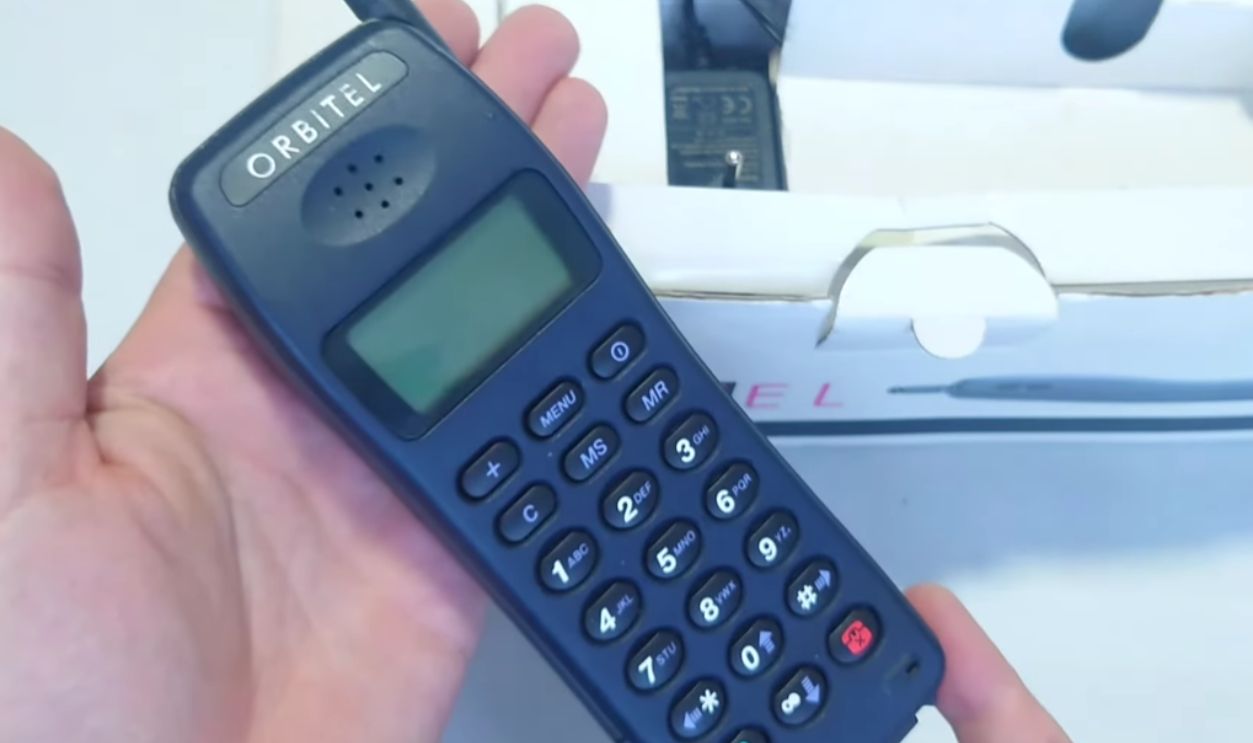 Orbitel 902 Pocket Phone unboxing - a brick Mobile phone from 1993 by Vintage phones archive
Orbitel 902 Pocket Phone unboxing - a brick Mobile phone from 1993 by Vintage phones archive
Siemens Mobiltelefon C1 (1985)
With its detachable handset and industrial shell, the Siemens C1 resembled battlefield gear more than a phone. Made for executives, the 14.5-pound briefcase unit didn’t go unnoticed. Collectors now value it at $200 to $500, though pricing varies based on completeness and cosmetic condition.
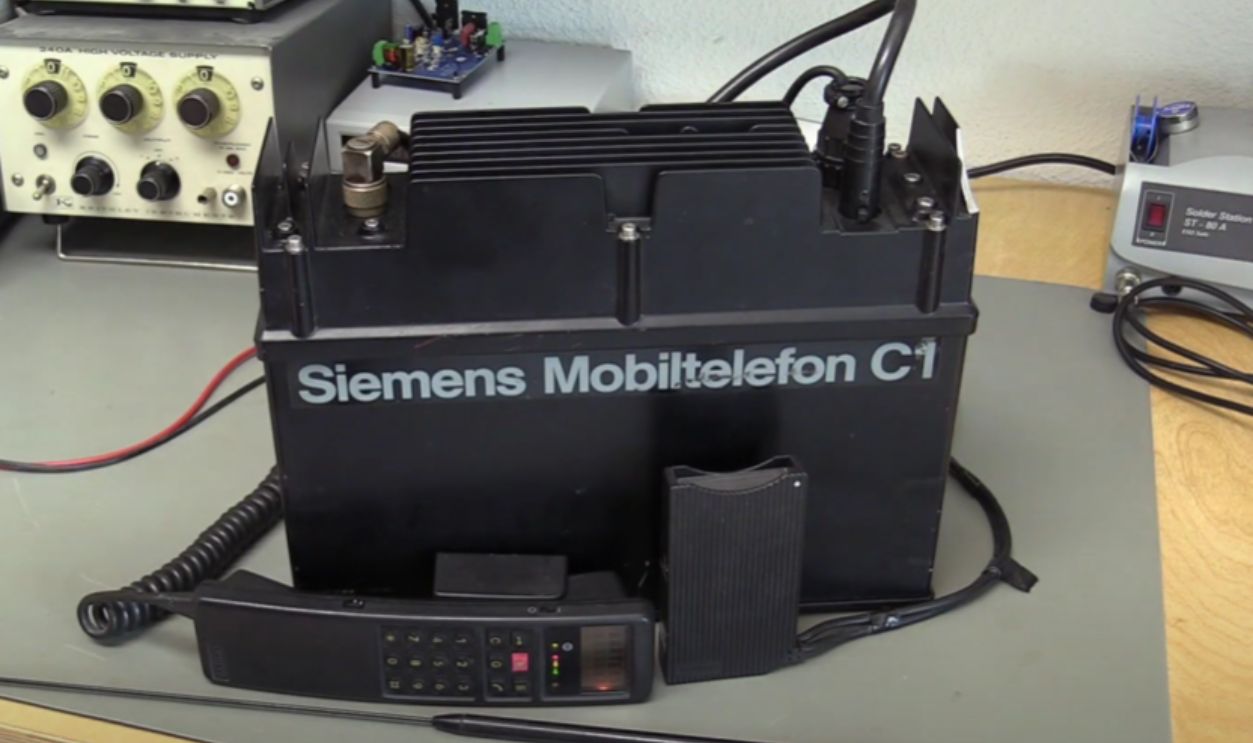 #84-1 Zerlegung: Siemens Mobiltelefon C1 - Teil 1 by ElektronikLabor
#84-1 Zerlegung: Siemens Mobiltelefon C1 - Teil 1 by ElektronikLabor
Motorola MicroTAC 9800X (1989)
Motorola’s foldable mouthpiece was a clever trick to keep things compact. Clean units now sell for $700 to $1,200. With a 12.3-ounce frame and just 30 minutes of talk time, this flip phone still managed to look sleek and redefine mobile design in its era.
Motorola StarTAC (1996)
By the mid-90s, the Motorola StarTAC helped mobile phones go mainstream. It sold over 60 million units and introduced the vibration alert. Weighing just 3.1 ounces, it provided up to three hours of talk time. Boxed examples typically sell for $300 to $400.
 ProhibitOnions at English Wikipedia, Wikimedia Commons
ProhibitOnions at English Wikipedia, Wikimedia Commons
Nokia 8110 (1996)
Sealed Nokia 8110 can now command up to $600, thanks to a mix of nostalgia and rarity. Though its banana curve and spring-loaded cover were already standout features, it was the phone’s role in The Matrix (1999) that made it a cultural icon.
Samsung SGH-600 (1998)
Sleek and approximately 0.8 inches thin, the Samsung SGH-600 was an early Korean compact mobile phone, with a limited presence in the US market. Full sets now sell in the $40 to $100 range. It supported GSM 900 and featured a monochrome display in a 3.35-ounce frame.
IBM Simon Personal Communicator (1994)
Long before iPhones, IBM introduced a revolutionary product: the first touchscreen smartphone. The Simon bundled apps like calendar and email, which ran on a DOS-like ROM. Around 50,000 were sold via BellSouth in the US. Today, a working unit in good shape can auction for $1000-$3,000.
 The IBM Simon Personal Communicator by Abby Grammer
The IBM Simon Personal Communicator by Abby Grammer
Nokia 9000 Communicator (1996)
Collector units of the Nokia 9000 Communicator usually trade between $100 and $400, a nod to its lasting appeal. In the late 1990s, business travelers adopted it as a mobile office. Its GEOS-powered fax and browsing tools came in a 14-ounce, laptop-like form.
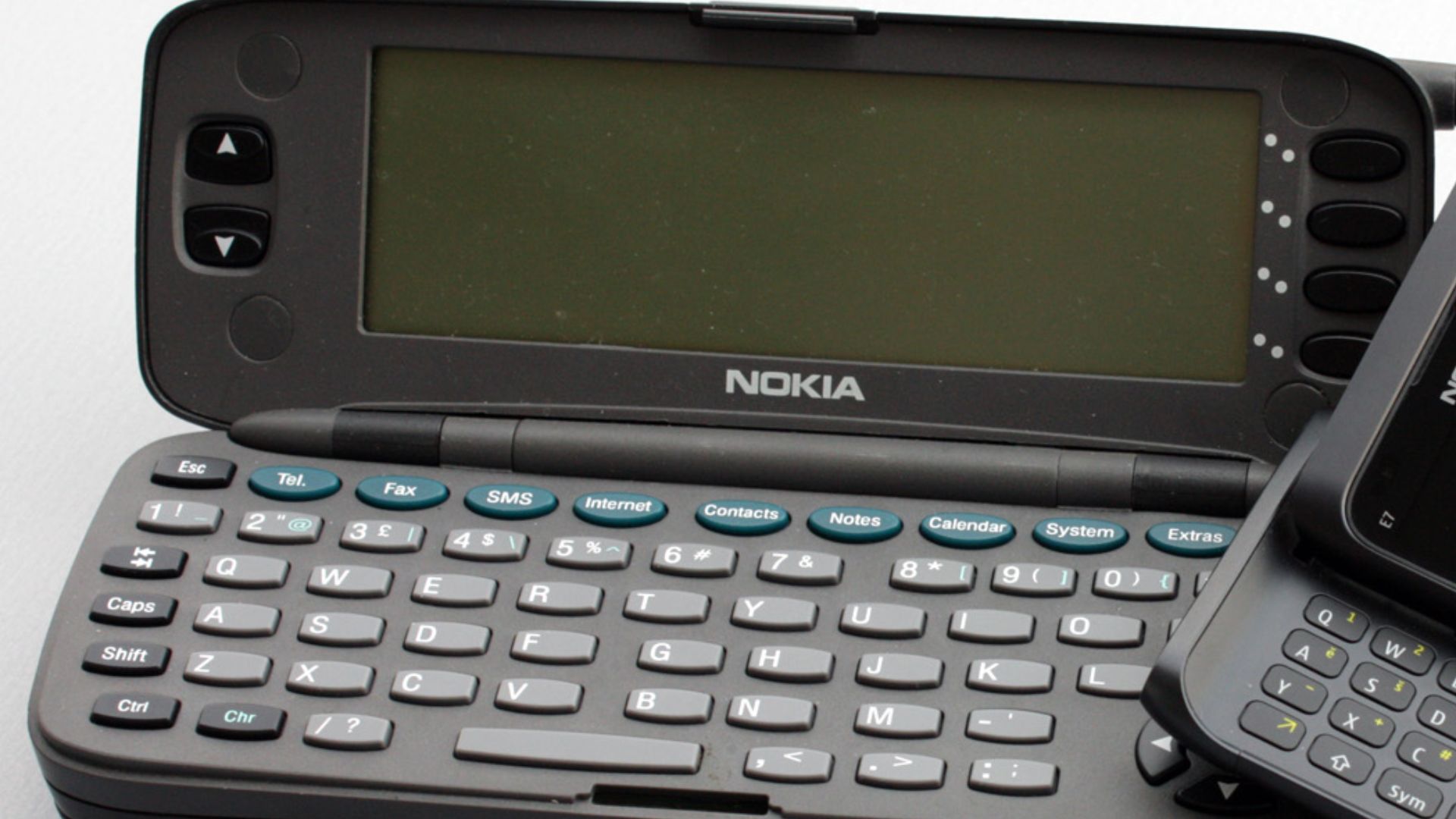 krystof.k (Twitter) & nmuseum, Wikimedia Commons
krystof.k (Twitter) & nmuseum, Wikimedia Commons
Ericsson R380 (2000)
Although the flip cover concealing a touchscreen looked futuristic in 2000, the Ericsson R380 offered more than novelty. Units today resell for $150 to $350. Its real legacy lies in launching the Symbian OS and entering the US market as the GSM-compatible R380 World variant.
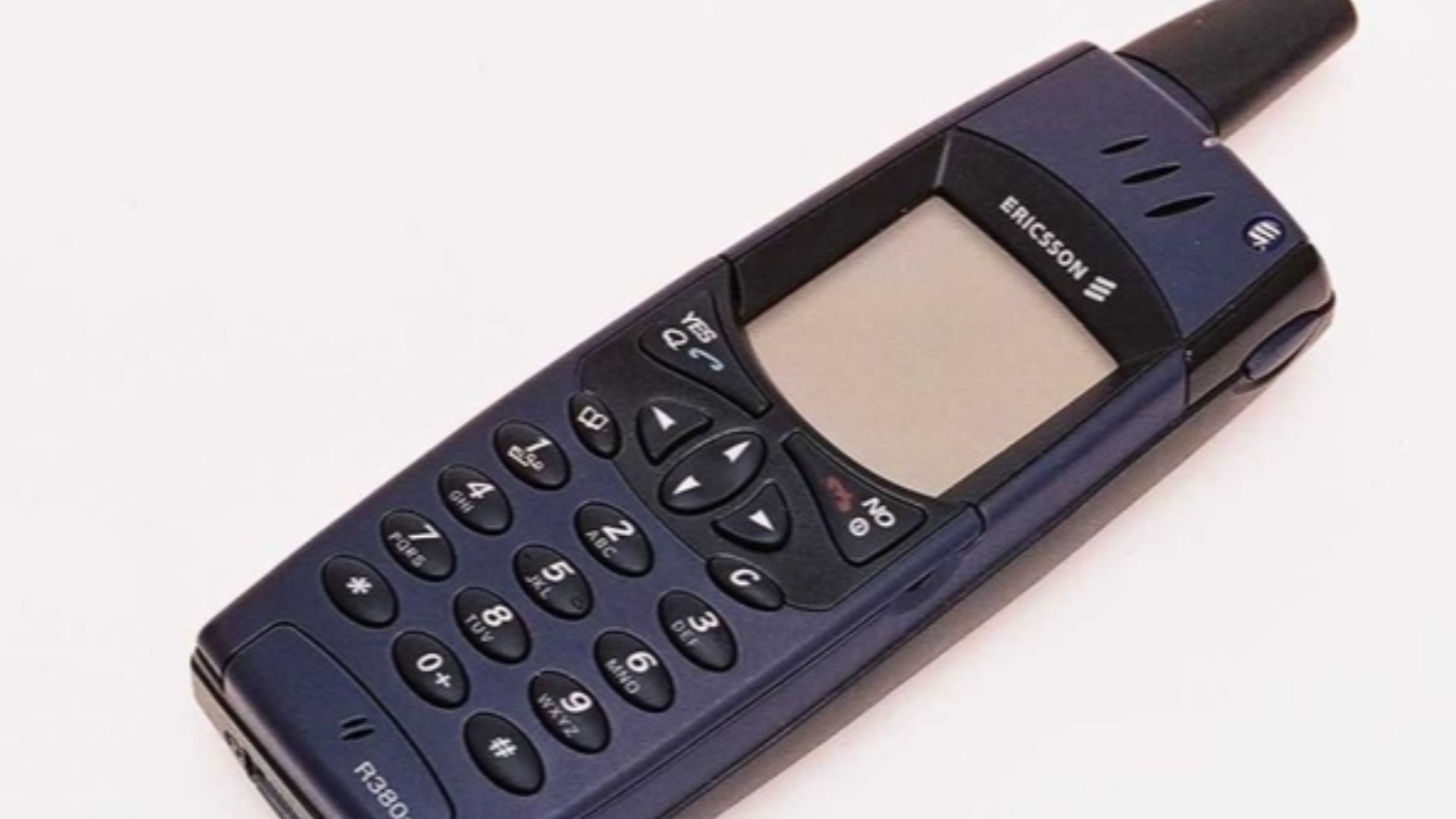 The Norwegian Telecom Museum, Wikimedia Commons
The Norwegian Telecom Museum, Wikimedia Commons
Motorola Aura R1 (2008)
How do you turn a phone into a status symbol? Motorola answered with the Aura R1, which flaunted a 480-pixel diameter sapphire crystal display set in CNC-machined stainless steel. Released in the US for about $2,000, boxed sets currently fetch $1,000–$2,000, especially with the leather case.
Nokia 8800 Sapphire Arte (2007)
Marketed as a high-fashion accessory, the Nokia 8800 Sapphire Arte weighed 150 grams and commanded attention. Initially priced at $1,600, it now resells for $300–$600. A polished steel body and sapphire crystal navigation key gave it a sleek, sophisticated signature look.
Vertu Signature M (2006)
Handcrafted in England, the Signature M combined titanium frames with leather accents. Sold at Neiman Marcus with a base price of $7,000 to $12,000, diamond versions typically exceed $20,000. In today’s collector market, authenticity is paramount, as original boxes and serial numbers significantly influence value.
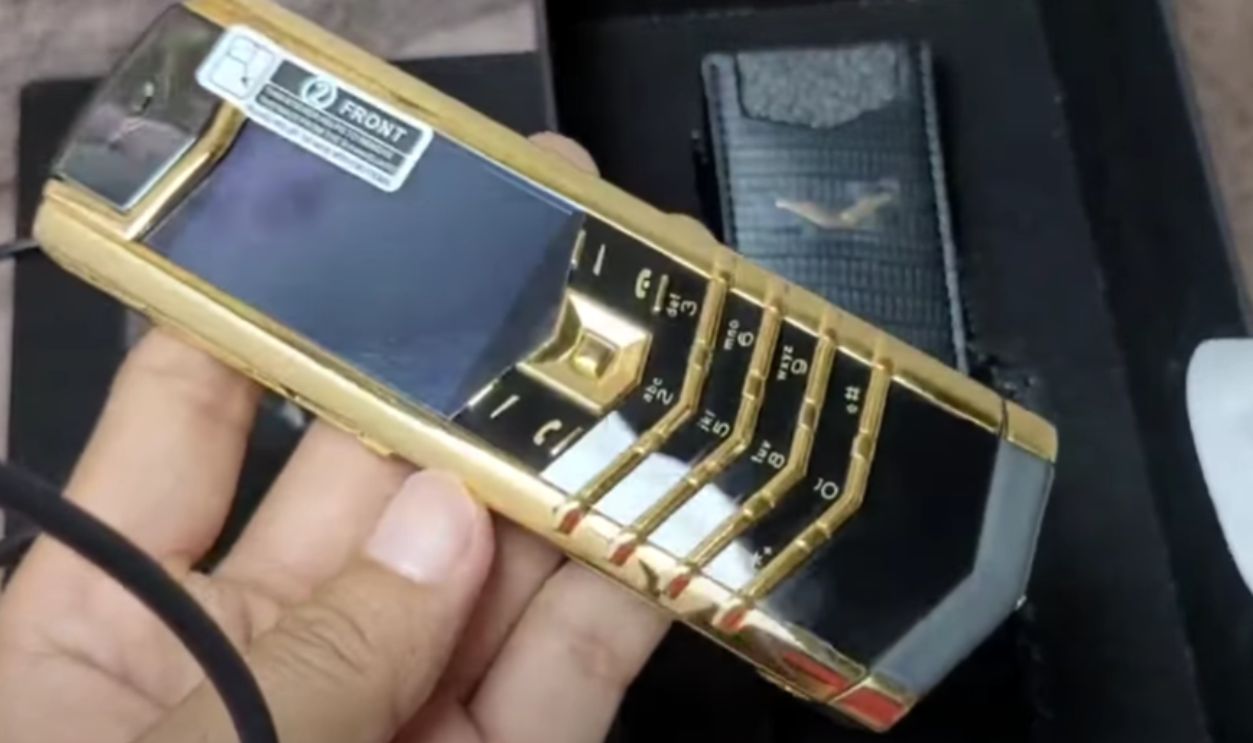 Vertu Signature Gold Limited Edition Luxury Mobile Phone by Tik Tik
Vertu Signature Gold Limited Edition Luxury Mobile Phone by Tik Tik
Nokia N91 (2005)
What if your phone doubled as your music library? That’s what the Nokia N91 promised, accompanied by its 4 GB hard drive and stereo Bluetooth. Though GSM-compatible in the US, its 5.6-ounce mechanical internals were fragile. Collectors now pay $100–$300 for working examples.
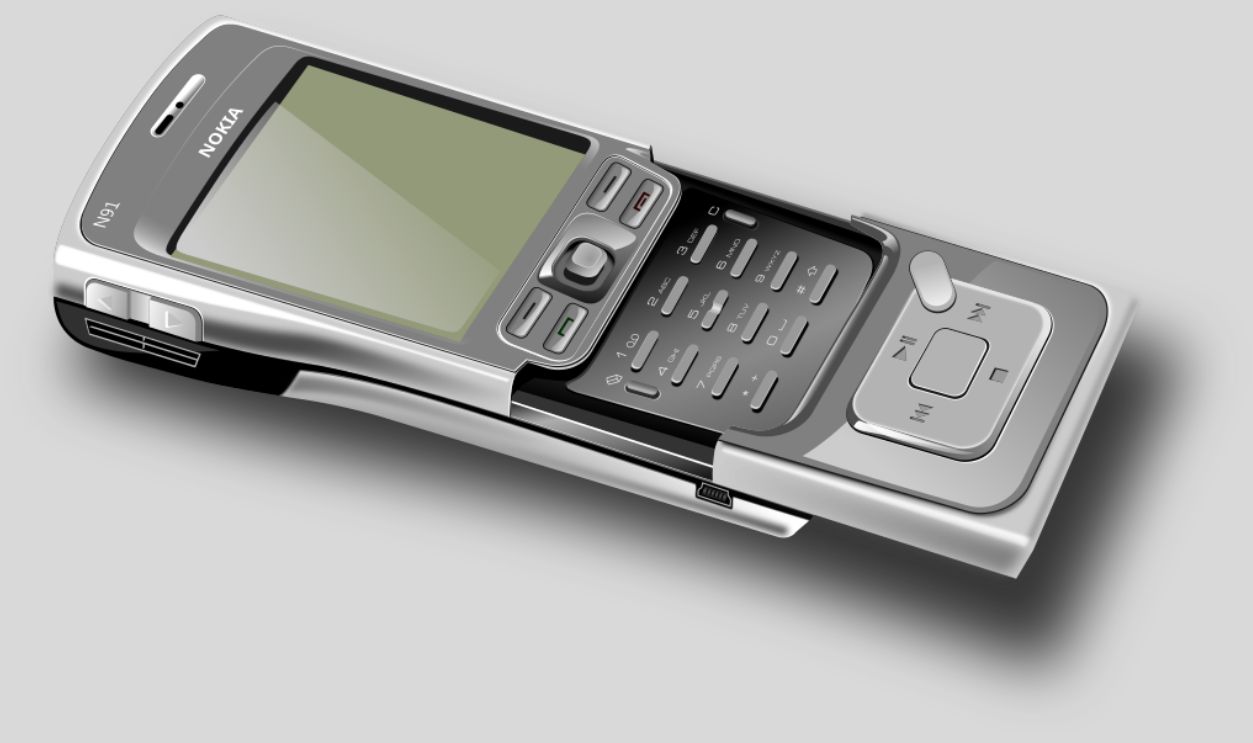 averpix, CC0, Wikimedia Commons
averpix, CC0, Wikimedia Commons
Sony Ericsson W800i (2005)
Sealed phones of the Sony Ericsson W800i still fetch $50–$150 from collectors seeking music-first nostalgia. Its orange accents and 30-hour playback made a statement, while AT&T’s US launch and 512 MB of storage helped define its impact.
LG Prada KE850 (2007)
Capacitive touchscreens weren’t born with the iPhone. The LG Prada KE850 was the first to arrive and won a Red Dot Design Award in 2007. At just 85 grams and released stateside via online boutiques, mint specimens currently trade hands for $100 to $300.
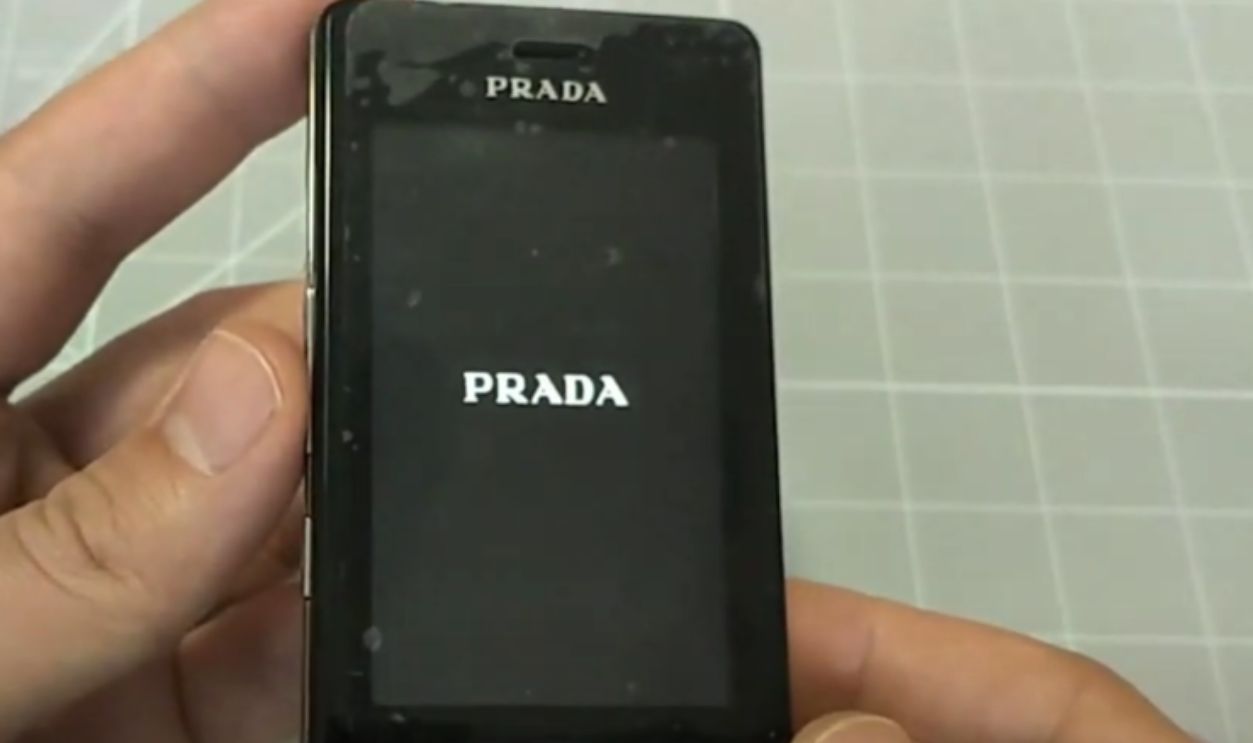 LG PRADA KE850 Mobile phone menu browse, ringtones, games, wallpapers by Vintage phones archive
LG PRADA KE850 Mobile phone menu browse, ringtones, games, wallpapers by Vintage phones archive
Ericsson R290 (1999)
At the moment, boxed Ericsson R290 mobiles demand up to $500, which reflects their enduring appeal. Though hefty at 350 grams, the phone’s dual-mode capability—switching between GSM and Globalstar—proved essential. Its reliability made it a staple among journalists and explorers, despite limited US licensing at launch.
 The Norwegian Telecom Museum, Wikimedia Commons
The Norwegian Telecom Museum, Wikimedia Commons
Hagenuk GlobalHandy (1997)
Having no visible antenna, the GlobalHandy felt futuristic in 1997. It was the first mobile phone to hide its antenna internally, wrapped in an ergonomic German body. US imports were limited, yet working models today attract $12–$31 from collectors charmed by their innovation.
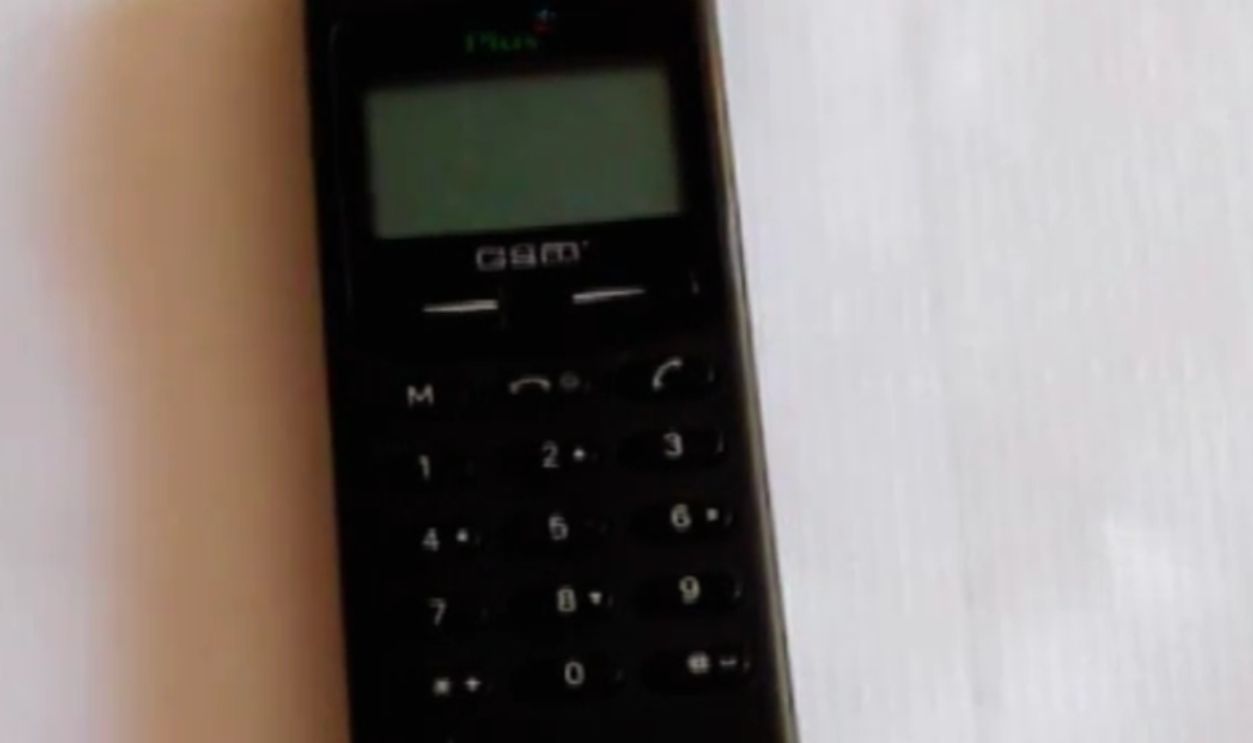 Hagenuk Duet - Global Handy (classic cellphone) by DarthKonio
Hagenuk Duet - Global Handy (classic cellphone) by DarthKonio
Nokia 7700 (2003)
Though Nokia’s first touchscreen phone never hit stores, the 7700 left a lasting impression. Leaked units later sold in US auctions for $1,250–$2,500. Its 3.5-inch stylus-ready screen and unreleased status keep even incomplete charger-only sets hovering near the $1,000 mark.
 Pete Barr-Watson, Wikimedia Commons
Pete Barr-Watson, Wikimedia Commons
iPhone 2G (2007)
In 2023, an unopened iPhone 2G sold for over $60,000—proof of its iconic status. Launched exclusively through AT&T, it featured a 3.5-inch multi-touch screen and a 2 MP camera. Within its first year, the device sold 1.39 million phones, marking a significant shift in mobile history.
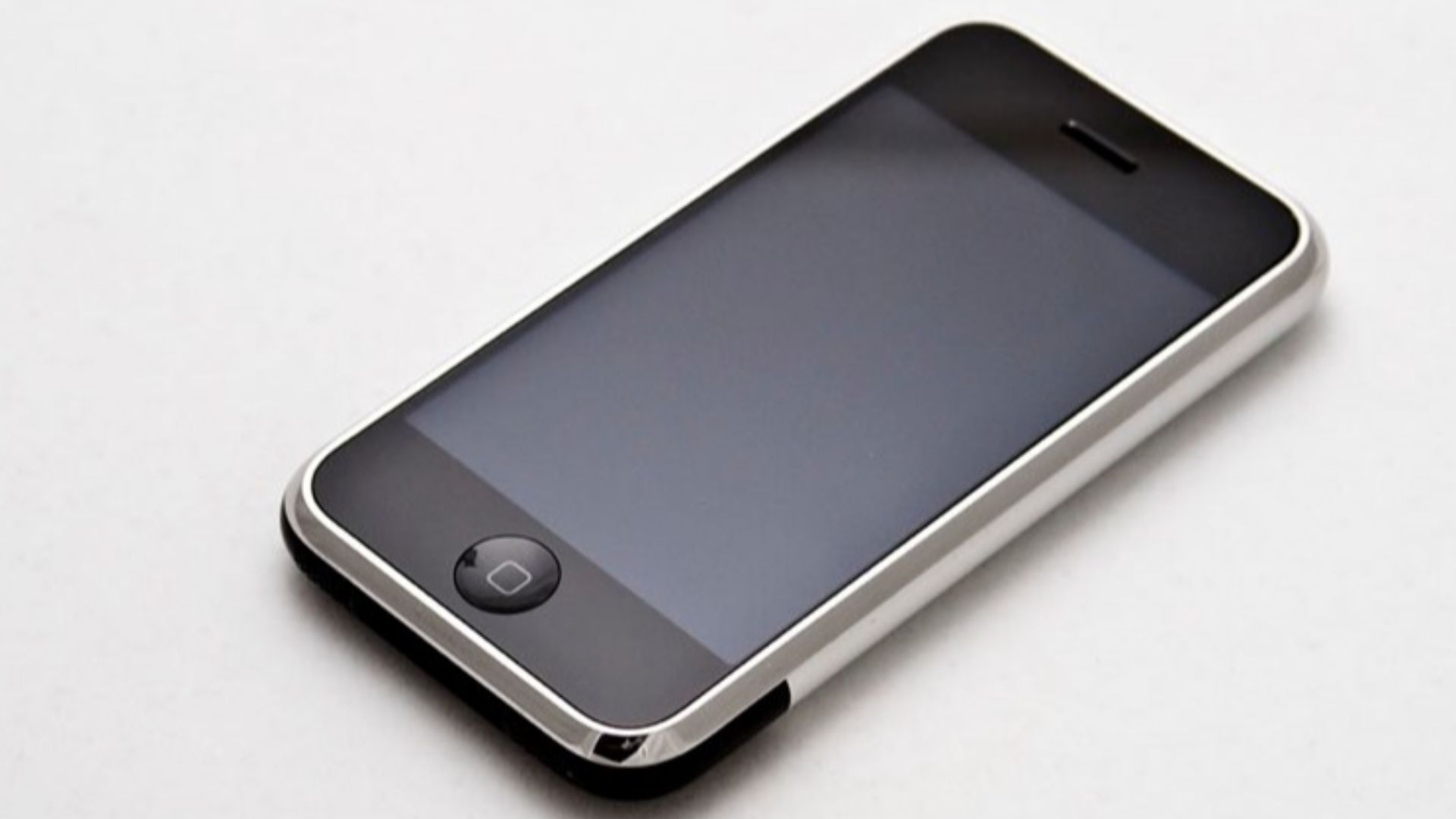 Carl Berkeley from Riverside California, Wikimedia Commons
Carl Berkeley from Riverside California, Wikimedia Commons
iPhone 3G (2008)
By adding 3G connectivity and the App Store, the iPhone 3G kicked off Apple’s software ecosystem. One million phones were sold within its first weekend alone. Depending on condition, boxed and unused examples at the moment go for $20–$100 among collectors.
iPhone Prototype (Pre-2007)
Early iPhone prototypes sell for $8,000 to $61,000 at auction, driven by their rarity and traceable origins. Never intended for the public, these came alongside stripped-down casings and non-retail firmware. Many trace back to former Apple engineers, who enhanced both their authenticity and collector value.
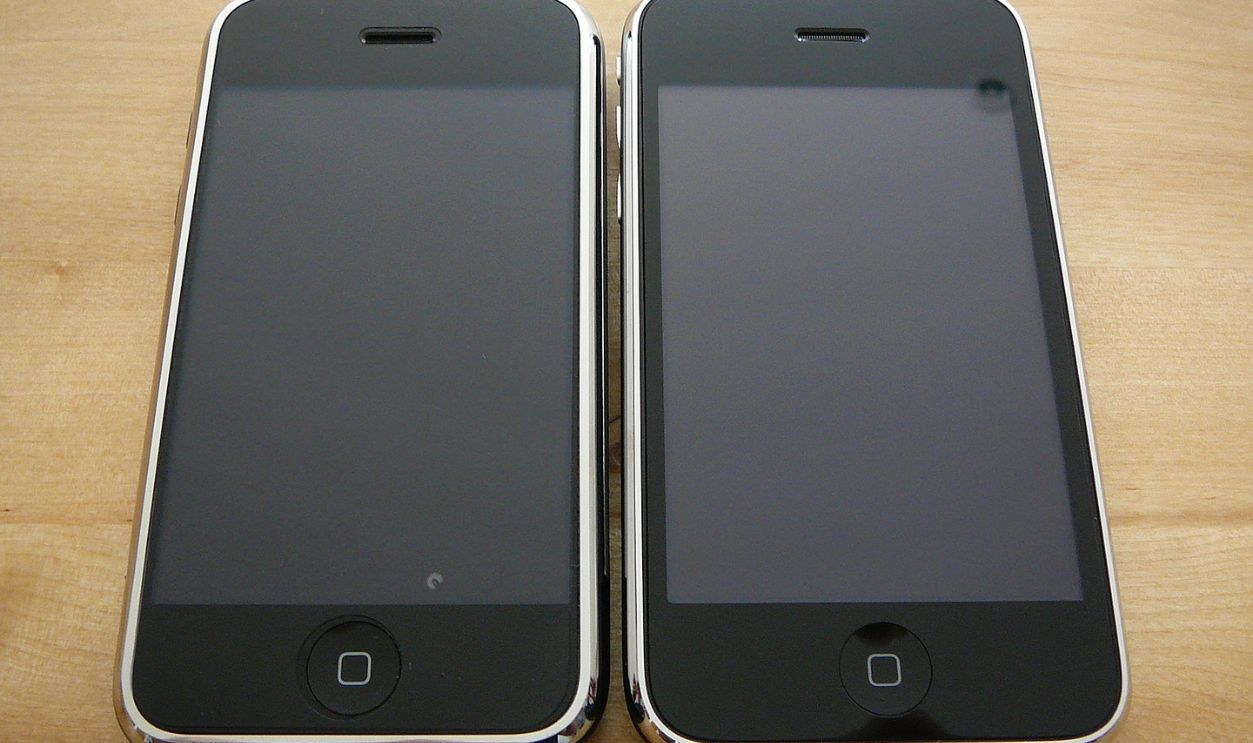 Dan Taylor from London, UK, CC BY 2.0, Wikimedia Commons
Dan Taylor from London, UK, CC BY 2.0, Wikimedia Commons
Motorola RAZR V3 (2004)
Celebrity endorsements and MTV appearances enhanced the RAZR V3 to cultural icon status. Reflecting enduring popularity, sealed units currently go for $200 to $400. With its ultra-thin 0.54-inch aluminum body and over 130 million units sold, it redefined the intersection of fashion and technology.
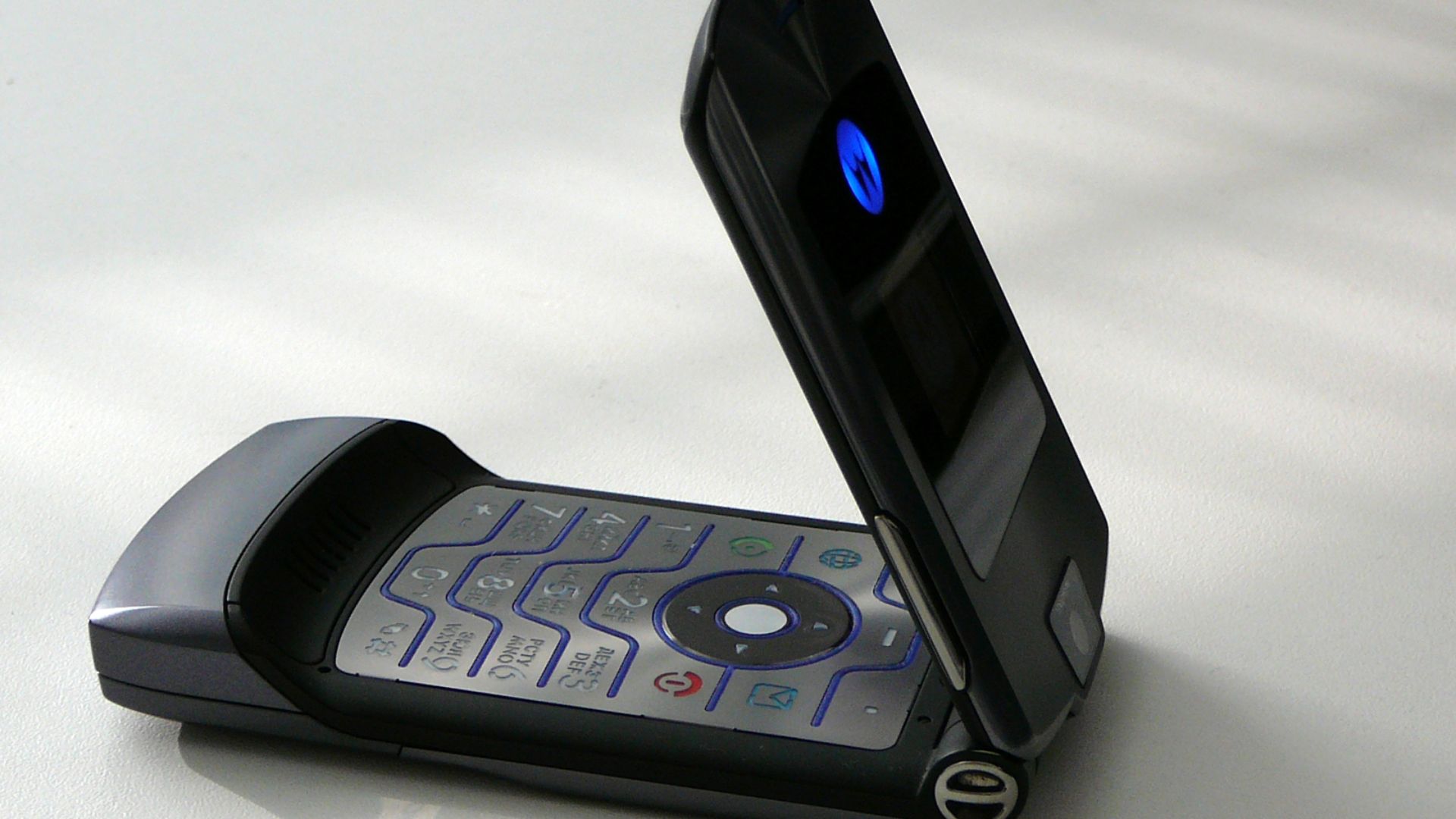 OptoScalpel, Wikimedia Commons
OptoScalpel, Wikimedia Commons

